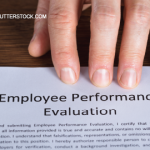
Sashkin / shutterstock.com
CHICAGO—Resolving conflict doesn’t start with clever strategizing, but with understanding the bigger picture and the factors that led to conflict in the first place, from cultural differences to resistance to change, an expert said at the 2018 ACR/ARHP Annual Meeting in a session about how to be a better leader.
“To me, what’s often missing are the contexts and the determinants,” said Quentin Eichbaum, MD, PhD, MPH, professor of pathology and professor of medical education and administration at Vanderbilt University Medical Center, Nashville, Tenn. Conflicts can be rooted in having different perceptions of the same events and situations, different understandings of language, cultural differences and many other factors. Dr. Eichbaum offered eight major categories to help you diagnose what you’re dealing with.
- Perspectives and perceptions: In conflicts, Dr. Eichbaum said, the parties “view each other as if they are each looking through a camera lens. Stand back a little bit sometimes and think, ‘This person I’m talking to is looking at it through another lens,’ and take that into account,” he said.
- Language and communication: Two people can have drastically different conceptions of the same word, said Dr. Eichbaum. For example, “tree” can conjure images of an oak for one person and a beachside palm tree for another. When someone speaks, they encode a message in their words that must be decoded by the listener. Conflict arises when two people don’t share frames of reference and the message is decoded in a way other than intended.
- People and emotions vs. positions and situations: Conflicts can be resolved or avoided when people and emotions remain separate from circumstances. But people often fall victim to the “fundamental attribution error,” Dr. Eichbaum said, in which we attribute our own mistakes to external situations, but mistakes other people make to their character. This can lead to a destructive rather than constructive approach in response to a precipitating event, he said.
- Trust: We must work harder to understand other people to better build trust, he said. “We don’t spend as much time trying to understand other people as we think we do,” he said. “We just make flash judgments of them.”
- Culture: Whether a culture is individualist or collectivist and whether good communication is considered simple and clear or nuanced and layered are two important considerations that can shape how to approach conflict resolution. Simply having employees who come from a variety of cultures doesn’t mean your organization is culture sensitive. “You also need to understand where the other person is coming from culturally,” said Dr. Eichbaum. “I think we need to pay a lot more attention to that.”
- Power hierarchies: There is a big difference between cultures with firm hierarchies and large power distances—the difference in effective power between those at the top and the bottom—compared with cultures in which hierarchies are not as rigid and the power distances are smaller. “How conflicts happen in those particular hierarchies is a context we should not underestimate,” Dr. Eichbaum said. “You cannot challenge authority in some kinds of cultures the way you might be able to in other cultures.”
- Change: The reasons people resist change can be an important consideration in trying to resolve a conflict, he said. Fear, lack of trust, comfort level, lack of knowledge and lack of competence are all reasons for resistance, and the extent to which people feel threatened by change can make a big difference in how to resolve a conflict associated with change.
- Mindset: Some organizations consider their abilities and qualities practically “carved in stone,” Dr. Eichbaum said, while others think their qualities can be cultivated and changed with effort.
Bottom line: “There’s no-one-size-fits-all approach to conflict management,” Dr. Eichbaum said. “When you see a conflict, try and take a step back and think, ‘What is going on here?’”
Feedback Tips
Sara Melita, MS, an executive coach and consultant who works with organizations including George Washington University, discussed ways to influence people and give feedback. People can exert influence through logical, emotional or cooperative appeals, she said, referring to a white paper from the Center for Creative Leadership.1
“The best leaders combine all three,” she said. “That’s really how you influence.” You might also have to adjust to someone’s preference, putting aside your strength of appealing to logic and instead appeal to someone’s emotion.
For example, if you’re trying to get a faculty member to take on a mentee, a logical appeal might involve saying, “You’re the most qualified person for the job.” For an emotional appeal, in contrast, you might say, “Wouldn’t it be nice to give back after having had so many good mentors in your own career?”
Simply having employees who come from a variety of cultures doesn’t mean your organization is culture sensitive.
When giving feedback, Ms. Melita said, use protocols, including first asking whether it’s a good time and location to provide input. Also, she said, use “I,” not “you.” Try to avoid saying “always” or “never” because they are too absolute. Allow emotions to enter, but in moderation. Use the word “when” rather than “because.” Make sure you describe the behavior in question very clearly. And remain ready, if appropriate, to suggest alternative behaviors that might have worked better.2
She also said leaders should seek their own feedback and be deliberate when learning on the job. “Just being better [at receiving] feedback will help your learning agility,” she said. “We do not all learn at the same rates and in the same ways. You can learn more than others. So you want to be [someone] who’s learning the most.”
Also learn from things that go well, she said.
“The next time something really good happens, sit back and think, ‘What did I do? What worked? What do I need to make sure I do it again?’” she said. “Don’t be one of these people who only studies their failures.”
Thomas R. Collins is a freelance writer living in South Florida.
References
- You can master the 3 ways to influence people. Center for Creative Leadership. (n.d.).
- Grigsby RK. Enhancing the behavioral science knowledge and skills of 21st-century leaders in academic medicine and science. J Organ Behav. 2015 Jun 3;35(1–2):123–134.



